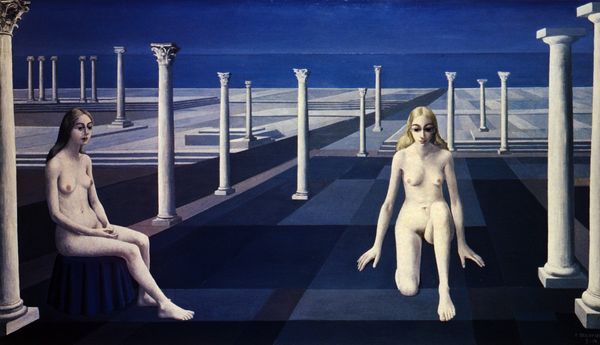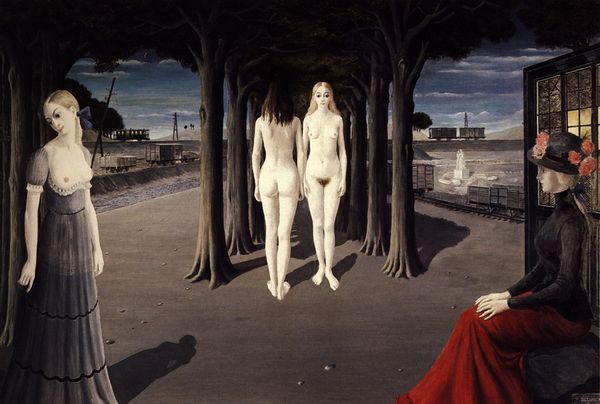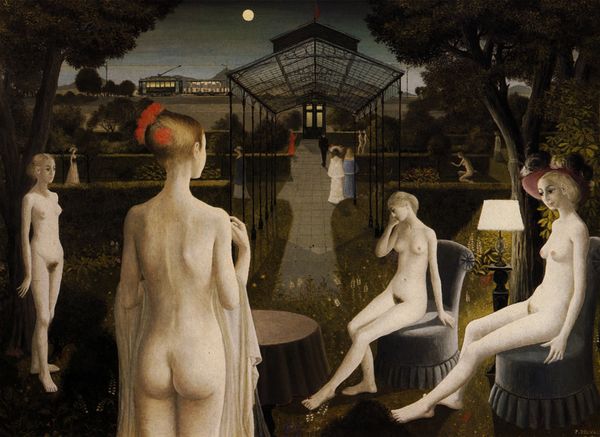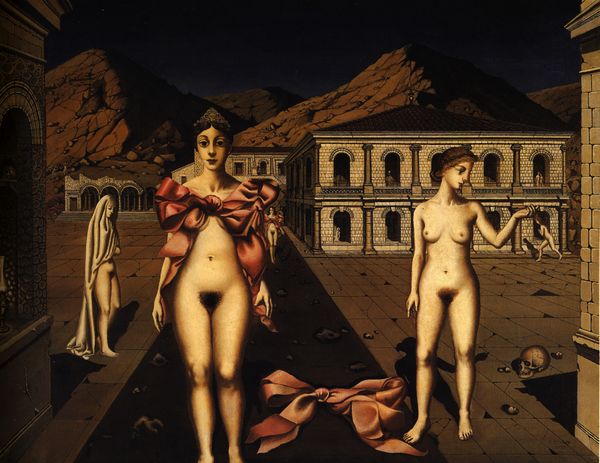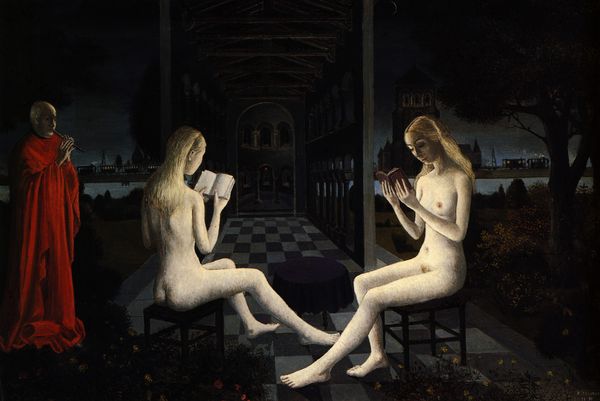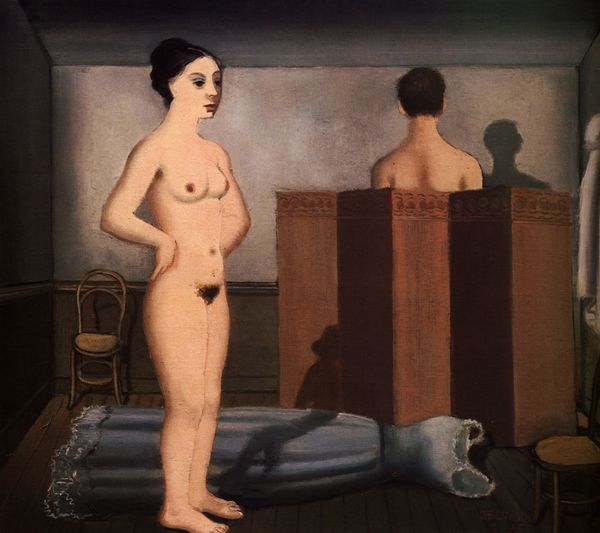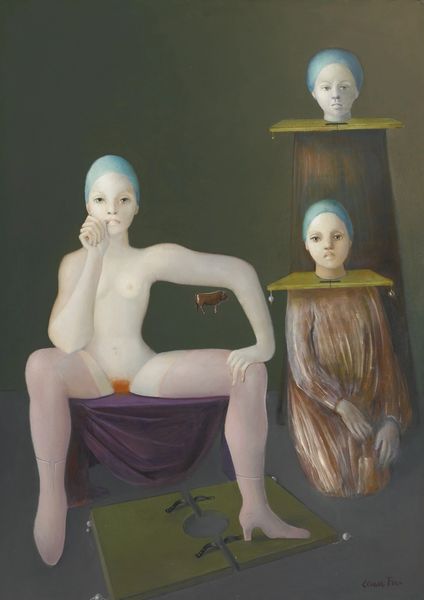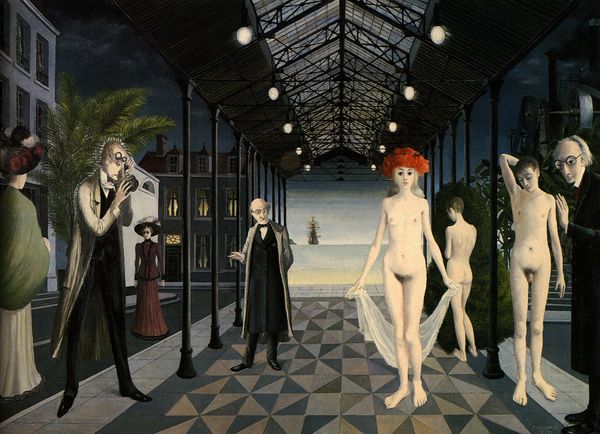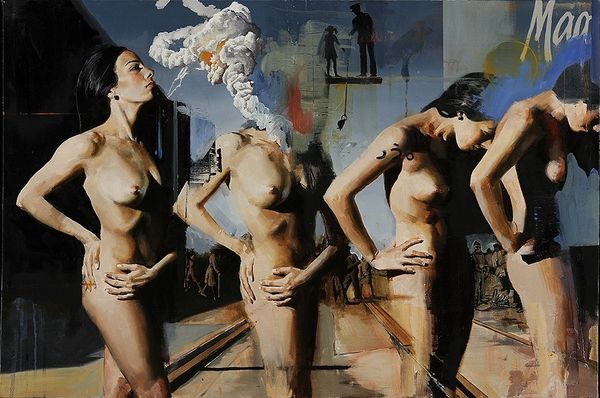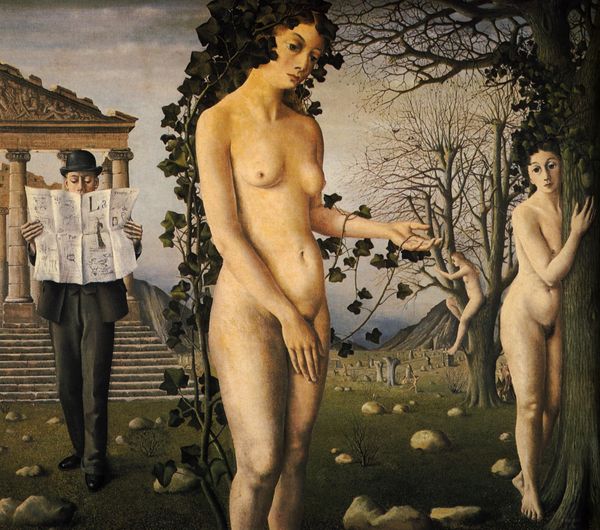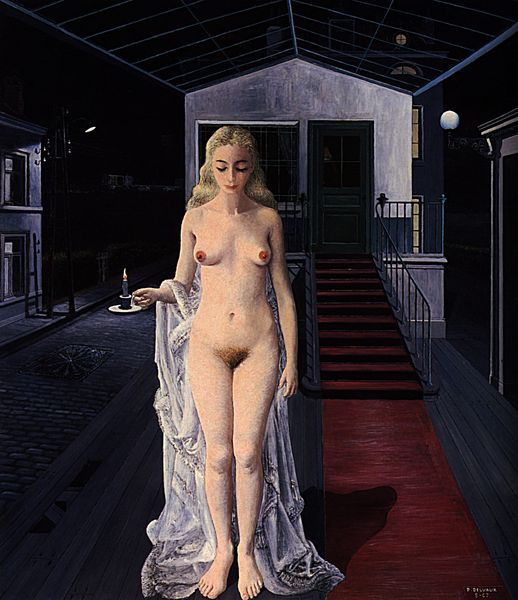
painting, oil-paint, sculpture
#
statue
#
fantasy art
#
painting
#
oil-paint
#
landscape
#
fantasy-art
#
figuration
#
female-nude
#
sculpture
#
nude
#
surrealism
Dimensions: 150 x 190 cm
Copyright: Paul Delvaux,Fair Use
Curator: Paul Delvaux's "Night Sea," painted in 1976, presents us with a very intriguing tableau of figures and architecture under a somewhat surreal moonlight. It’s rendered in oil on canvas, exhibiting Delvaux's signature precision. Editor: Immediately, I'm struck by the dreamlike quality. It's quiet and unsettling, like stumbling upon a secret ritual by the shore. The figures are pale and statuesque, almost luminescent against the deep blue night. There's an otherworldliness here. Curator: Delvaux often uses pale, almost ghostly figures, often nude, to challenge classical representation while subtly evoking themes related to industrial labor, the textile factories around Belgium during the later periods of industrialization... It’s important to see those industrial production lines reflected in the repetitive presentation of female bodies as objects of display, often frozen or sleepwalking. Editor: That's a fascinating connection to industrialism. For me, there's also something deeply psychological at play. They could also suggest vulnerability or an emotional absence, existing but not fully present, I suppose. Curator: Indeed. He does utilize this repetitive pattern and vacant expressions... Delvaux was influenced by Surrealism, as we can appreciate in this painting’s theatrical composition and illogical juxtaposition of elements. He engages critically with how traditional representation is a factory line churning out images. The materials of the artist, particularly oil, are being wielded in response to production-line type arrangements of figures and spaces. Editor: Oil paint can evoke different sensations... He uses oil almost to create an unnatural slickness over everything, heightening that sense of artificiality. Perhaps he meant to signal this artificial factory logic applied even to nature and the sea? And the nude figures… their pallor accentuates their vulnerability but it is this emotional resonance that actually brings us closer to the artwork itself as observers. Curator: It shows Delvaux’s acute attention to the artistic mode of production, and he creates space for dialogue rather than static repetition through our attention as the spectator and consumer of artistic commodities. Editor: It's fascinating to peel back those layers. I’m leaving with a renewed perspective, seeing more deeply not just into its visual aspects but also its relationship with industry and massification.
Comments
No comments
Be the first to comment and join the conversation on the ultimate creative platform.
